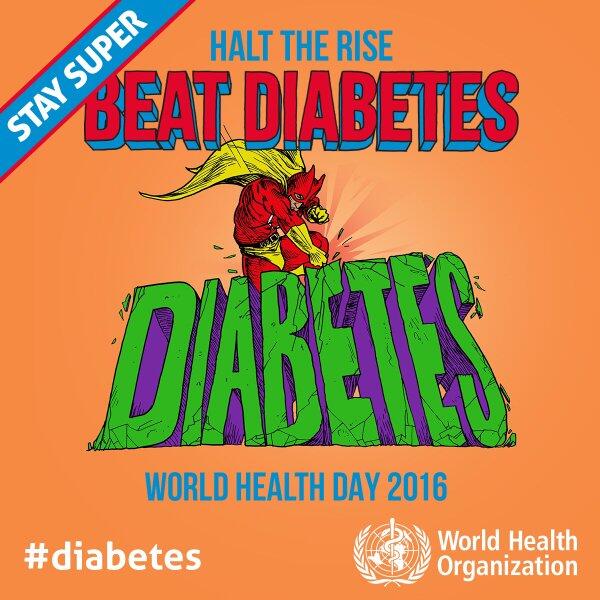The World Health Organization (WHO) is still publishing material on its social media accounts about diabetes since the 7th of April. Diabetes, as WHO defines it, is a chronic disease that occurs either when the pancreas does not produce enough insulin or when the body cannot effectively use the insulin it produces. Insulin is a hormone that regulates blood sugar.
Type 1 diabetes is characterized by deficient insulin production and requires daily administration of insulin. The cause of type 1 diabetes is not known and it is not preventable with current knowledge.
Gestational diabetes is hyperglycaemia with blood glucose values above normal but below those diagnostic of diabetes, occurring during pregnancy 4. Women with gestational diabetes are at an increased risk of complications during pregnancy and at delivery.
Accorrding to WHO, 422 million people have diabetes around the world. That’s almost four times the number of people living with diabetes than in 1980! Most of them live in developing countries, and factors driving this dramatic rise include overweight and obesity.
WHO announced that “We need to step up prevention and treatment of the disease”, adding “Together, we can beat diabetes”.
In the “Global Report on Diabetes” released Wednesday, WHO says diabetes caused 1.5 million deaths in 2012, and another 2.2 million deaths were caused by higher-than-optimal blood glucose levels, by increasing the risks of cardiovascular and other diseases.
The report does not distinguish between Type 1 diabetes, which involves deficient insulin production in the body and requires daily insulin injections for survival, and Type 2, in which the body uses insulin ineffectively and is more often associated with obesity and relatively sedentary lifestyles.
The increase has coincided with growing rates of obesity: In Western countries like the U.S and Britain, two-thirds of people are now overweight or obese. The WHO report stopped short of any drastic new recommendations, suggesting for example that countries build political support and allocate resources for diabetes prevention, and “prioritize actions to prevent people becoming overweight and obese.”
The report said WHO is updating its guidelines on fat and carbohydrate intake, but said adults can reduce their risk of type 2 diabetes through regular, adequate physical activity and “healthy diets that include sufficient consumption of dietary fiber, and replacing saturated fatty acids with polyunsaturated fatty acids.”











